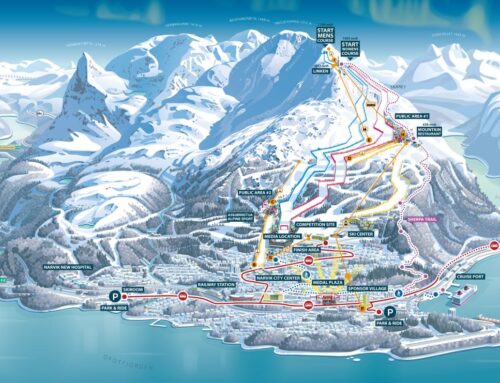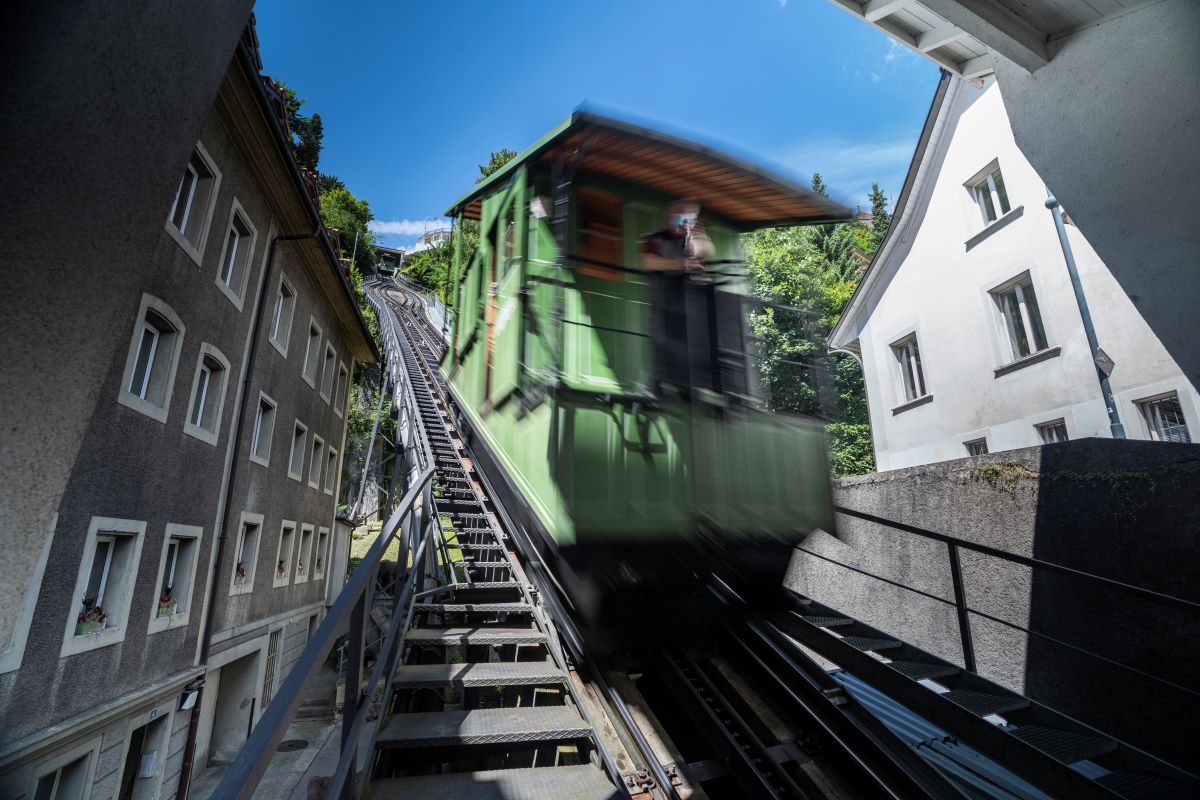
Cableway & Technology, Cities
125 years of travel with wastewater
As part of the urban public transportation network, co-managed by the Freiburg agglomeration, the funicular remains a vital link between the upper and lower parts of Freiburg, even 125 years after its establishment.
Today, its operation is ensured by the Freiburg Public Transport Company (TPF) and embodies a symbol of Freiburg’s identity.
The Seam between Upper and Lower Town
Initially, the Freiburg “Funiculaire” was built to transport workers from the lower town to construction sites and industrial areas that were emerging around the train station.
At that time, the “common people” lived on the banks of the Saane, while bourgeois neighborhoods were developing higher up. Since then, the socio-economic landscape of Freiburg has changed significantly.
The ups and downs of the funicular have remained, serving as a seam between the two fundamental and inseparable units of the city.
The beginnings
Freiburg funicular with workers around 1898.
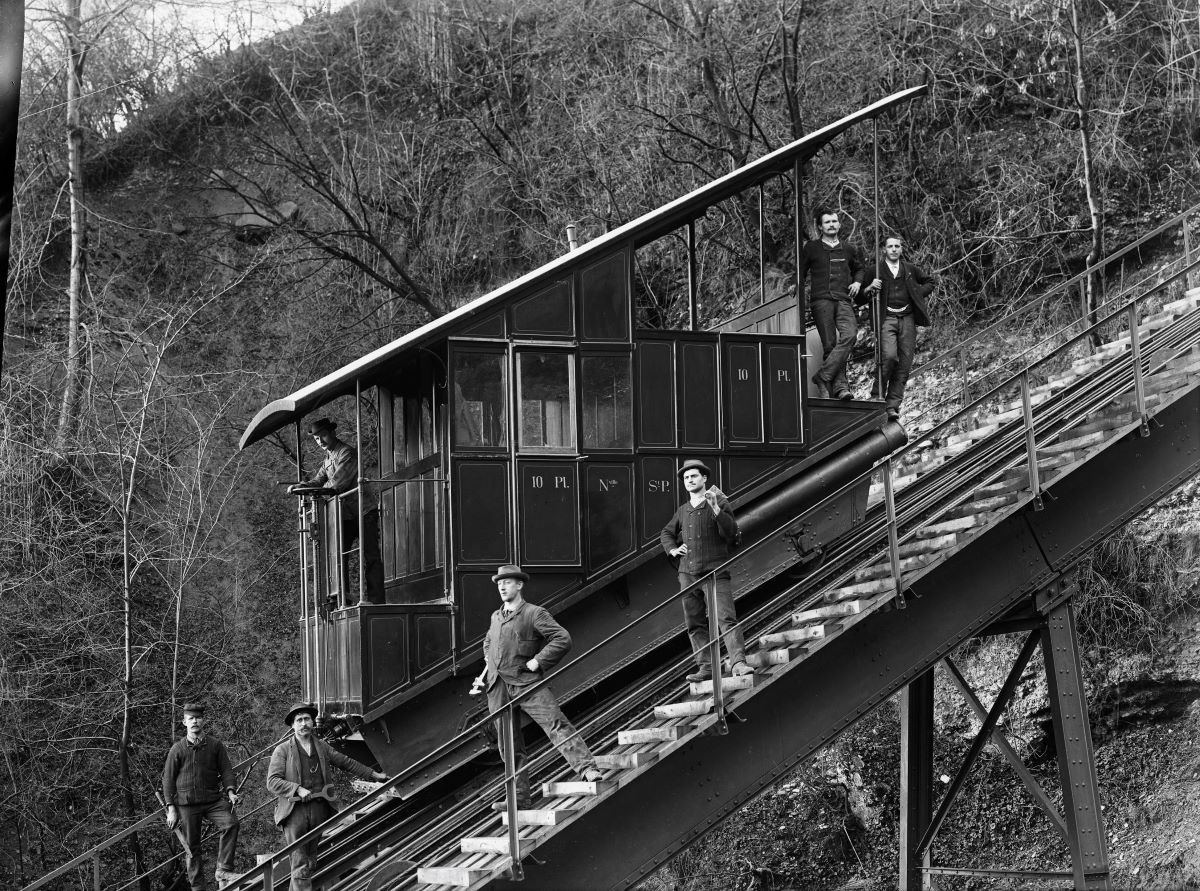
Drive by wastewater
The great uniqueness of the Funiculaire Neustadt/Saint Saint-Pierre is that it is one of the last seven funiculars in Europe operated by water ballast.
At the end of the 19th century, this mode of operation was chosen for economic reasons as well as to ensure its independence and regularity. The weight of the descending car, whose tank is filled before departure, pulls a cable that transports the other car up the slope.
Once the descending car has arrived at the valley station, the tank is emptied into the sewer system of the Neustadt district. Now the motion works in reverse.
Since the municipal water and forestry company at that time could not guarantee the water required for regular operation, the Funiculaire uses wastewater from the upper town. This makes it a champion of renewable energy.
Postcard motif
Funicular from the Neustadt district before 1912.
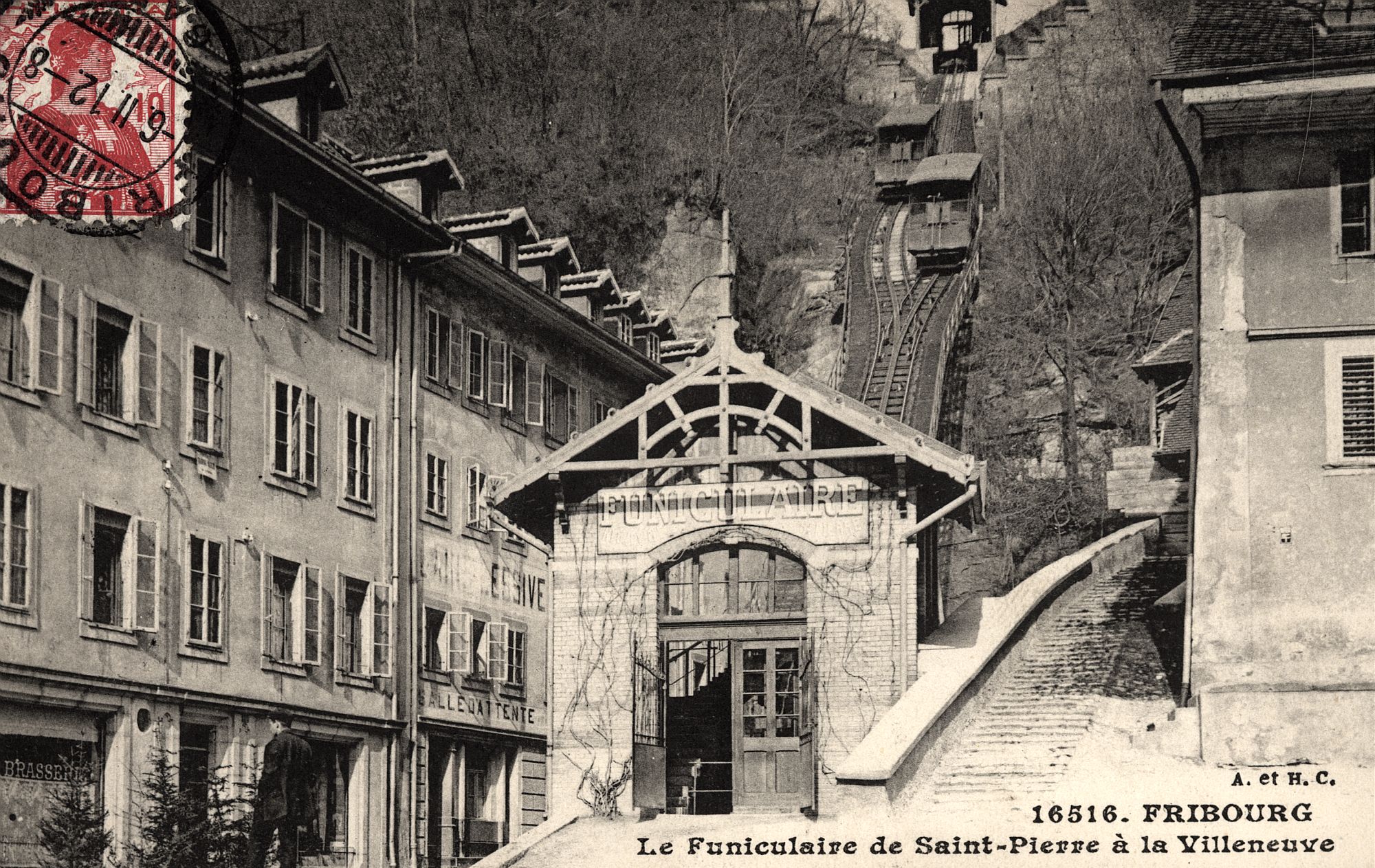
Passenger traffic and connection
Since the end of the 19th century, the travel time has remained unchanged: two minutes. Between 1899 and 1949, the Funi transported an average of 500,000 passengers per year.
The record was set in 1964 with 630,115 travelers. In recent years, the number of passengers has been around 175,000 per year. Commuters, residents, and school children continue to use the cog railway to reach the city center.
In summer, the funicular reaches its highest frequency thanks to bathers who want to reach the Motta swimming pool.
Technical data:
car
| Capacity | 20 seats, including 10 seated places |
| Dimensions | 5,8 m x 2,1 m x 3,4 m |
| Reservoir capacity | 3 m^3 |
| Empty weight | 8,000 kg |
| Descending car | ca. 9,000 kg |
| Brakes | 4 independent brakes: Handbrake on each platform Emergency pedal brake Speed regulator starting from 1.2 m/s Emergency brake in case of cable breakage |
Technical data:
rails
| Valley station altitude | 550 m |
| Height difference | 56,40 m |
| Track length | 126.40 m |
| Average Gradient | 53% |
| Track Gauge | 1.20 m |
| Crossing radius | 120 m |
| Length of passing track | ca. 46 m |
| Diameter of traction rope | 22 mm |
| Diameter of traction sheave | 3,6 m |
| Diameter of deflection sheaves: | 2,2 m |
| Reservoir | 150,000 l |
Technical data:
operation
| Maximum speed | 81.20 m/s |
| Height difference | 411 m |
| Travel time | 2 min |
| Duration of stoppage in minutes | 3 min |
| Capacity per hour | 480 P/h/d |
| Record passengers per year | 630,115 |
| Passengers in 2023 | 182,035 |
9,000 hours for the renewed “Funi”
The funicular was long owned by the Cardinal Brewery. In 1965, it passed into public hands before being integrated into the Transports en commun de Fribourg (TF) in 1970.
Following an axle breakage in 1996, a complete overhaul of the infrastructure was necessary for the railway to reach its centenary.
9,000 hours of meticulous work were required, with a large portion carried out in the workshops of Von Roll AG in Bern, the company that had built the funicular a century earlier. Upon its re-commissioning, the Funi was declared a federal historical monument.
Since then, the TF, now the Freiburg Public Transport Company TPF, has taken great care of the museum piece. With the electrification and disappearance of most funiculars with water ballast, the Freiburg funicular almost accidentally became a worldwide attraction.
Symbol of the city
The people of Freiburg love their funicular; 5,000 signed in 1996 for its preservation.
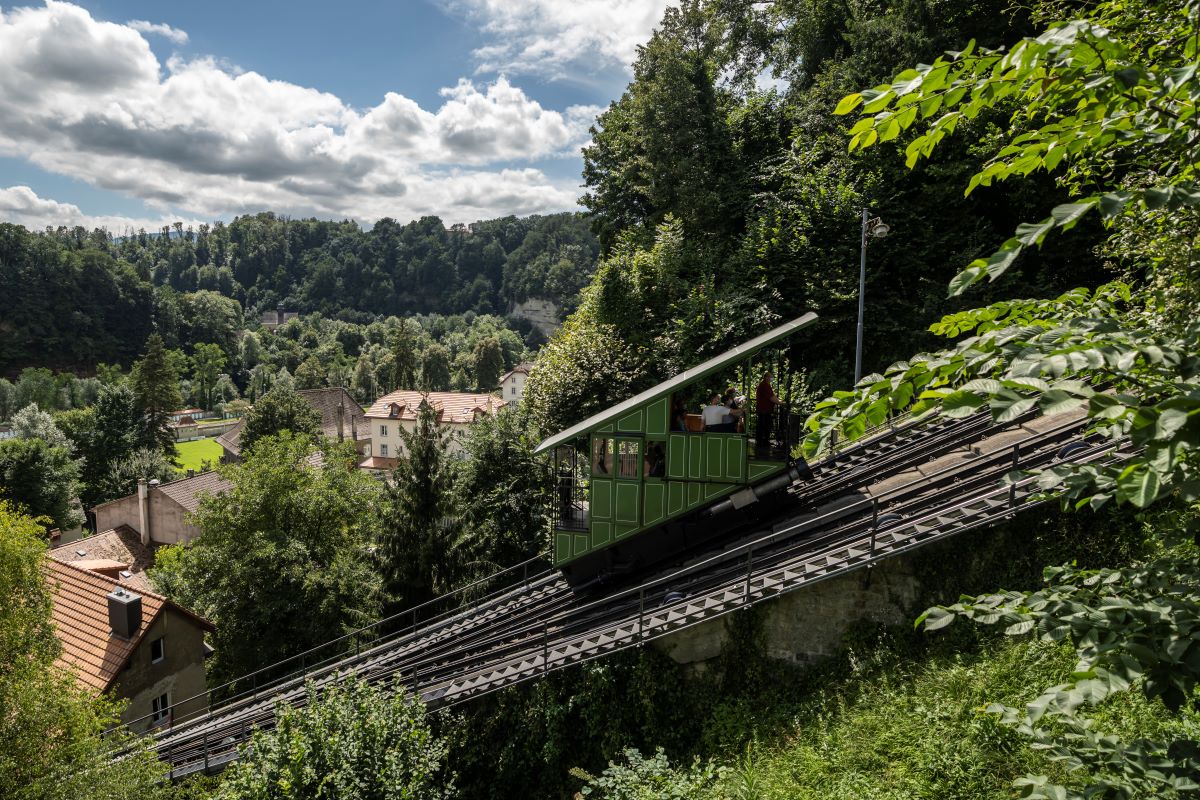
A Well-Oiled Century
During the renovation, the mechanics were faithfully restored to their original state as they were at the end of the 19th century. Back then, ball bearings didn’t exist yet. So, bronze bushings are directly on the iron axles. To ensure movement nevertheless, a film of grease between the parts is indispensable.
At TPF, four mechanics and one technical supervisor take turns maintaining the moving historical monument. Twice a week, typically on Mondays and Thursdays, they lubricate the mechanics.
Once a month, the tanks storing wastewater under the Python Square are completely emptied and cleaned. Additionally, an annual inspection takes place at the end of September. During this time, the funicular is out of service for two to three weeks as the brakes must be fully dismantled for inspections.
The last funiculars operated with water ballast
- Braga (P): Elevador do Bom Jesus, 1882, 274 m
- Redcar & Cleveland (UK): Saltburn Cliff Tramway, 1883, 63 m
- Folkestone (UK): Leas Cliff, 1885, 50 m
- Wiesbaden (GER): Nerobergbahn, 1888, 440 m
- Freiburg (CH):F Funiculaire Neuveville Saint Pierre, 1899, 126 m
- Lynton (UK): Lynton / Lynmouth Cliff Railway, 1890, 262 m
- Machynlleth (UK): Centre for Alternative Technology, Centre‘s Cliff Railway, 1992, 60 m
Concession due in two years
Every six years, the cars are taken off the tracks and brought to the workshops of GARAVENTA AG, which took over the cable car business from Von Roll.
The funicular is indeed considered a cable car. Like gondolas and cable cars, all safety-relevant parts must be regularly inspected with ultrasound for any potential cracks.
Furthermore, the funicular has a concession granted by the Federal Office of Transport for 50 years. This concession expires in 2026.
A comprehensive revision is already planned to renew the concession and ensure that the rumble of the funicular remains part of the daily rhythm of the neighborhood residents and loyal passengers.
